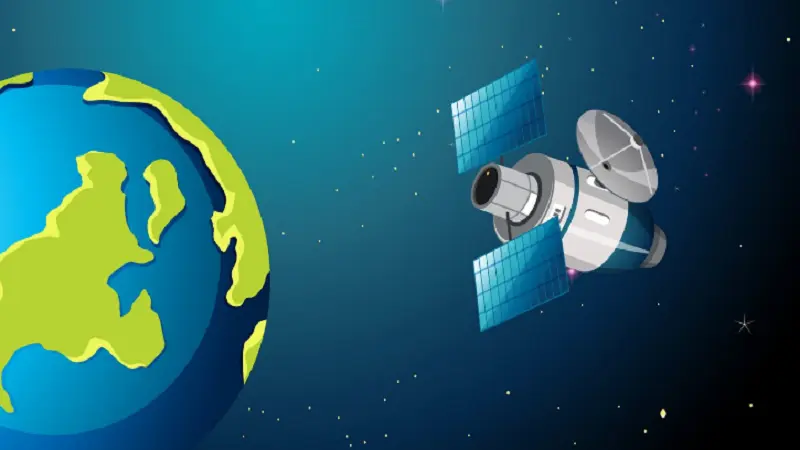In an era where staying connected is more critical than ever, the intersection of satellite technology and telecommunications is reshaping how we access the internet. The collaboration between SpaceX and T-Mobile, highlighted in various reports including those from The Information and insights from tech analyst Ben Thompson, has the potential to revolutionize communication, sources spacex tmobilepeterson theinformation. especially in remote and underserved areas. This article delves into the details of this groundbreaking partnership, the technology behind it, and what it means for the future of connectivity. sources spacex tmobilepeterson theinformation.
The Landscape of Connectivity
Before diving into the SpaceX-T-Mobile partnership, it’s essential to understand the current landscape of internet connectivity. Traditionally, people have relied on cable and fiber-optic networks for internet access. While these technologies work well in urban areas, rural regions often struggle with limited options. This digital divide has far-reaching implications, impacting education, business, healthcare, and social connectivity.
As demand for reliable internet grows, especially after the pandemic forced many to adapt to remote work and online learning, the need for innovative solutions has become increasingly apparent. Enter SpaceX, with its ambitious Starlink project, aiming to deliver high-speed internet globally through a constellation of satellites.sources spacex tmobilepeterson theinformation.
The SpaceX Starlink Initiative
SpaceX, founded by Elon Musk in 2002, has made headlines not just for its rocket launches but also for its vision to make space more accessible. sources spacex tmobilepeterson theinformation. One of its flagship projects, Starlink, aims to provide high-speed, low-latency internet service through a network of thousands of satellites orbiting the Earth.sources spacex tmobilepeterson theinformation.
As of 2023, Starlink has already launched over 3,000 satellites, with plans for many more. The idea is simple: by placing satellites in low Earth orbit (LEO), Starlink can deliver internet service to areas that traditional networks cannot reach. The result is a potential game-changer for millions of people around the world, particularly in rural areas where laying cables is economically unfeasible.
Key Features of Starlink
- Global Coverage: Starlink aims to provide internet access to every corner of the globe, sources spacex tmobilepeterson theinformation. ensuring that even the most remote locations can connect.sources spacex tmobilepeterson theinformation.
- High Speed: Users can experience speeds comparable to traditional broadband, often reaching up to 150 Mbps or more.
- Low Latency: Unlike traditional satellite internet, which can have high latency due to the distance signals must travel, Starlink’s LEO satellites significantly reduce this delay.sources spacex tmobilepeterson theinformation.
- User-Friendly Setup: The Starlink kit includes a satellite dish and a Wi-Fi router that can be set up in minutes, making it accessible even for those who are not tech-savvy.
T-Mobile’s Role in the Collaboration
T-Mobile, one of the largest telecommunications providers in the United States, has also been keenly aware of the need for enhanced connectivity. As a leader in 5G technology, T-Mobile is positioned to play a significant role in improving internet access, especially in areas where traditional service providers may fall short.sources spacex tmobilepeterson theinformation.
The collaboration with SpaceX aims to integrate Starlink’s satellite internet capabilities with T-Mobile’s cellular network. This partnership promises to deliver a seamless connectivity experience, even in the most challenging environments.
What This Means for Users
- Expanded Coverage: By leveraging Starlink’s satellite network, T-Mobile can provide coverage in areas where cellular signals are weak or non-existent. This is particularly beneficial for rural communities and emergency services.
- Disaster Resilience: In the event of natural disasters or other emergencies, traditional communication networks can be overwhelmed or damaged. Satellite internet provides a robust alternative that can remain operational when other systems fail.
- Enhanced 5G Experience: T-Mobile’s 5G network, combined with Starlink, could offer faster and more reliable service, especially in areas where traditional internet infrastructure is lacking.sources spacex tmobilepeterson theinformation.
Insights from Industry Experts
Reports from industry insiders, including publications like The Information, sources spacex tmobilepeterson theinformation. have highlighted the strategic nature of the SpaceX-T-Mobile partnership. Analysts suggest that this collaboration is not just about providing internet access; it’s about reshaping the entire telecommunications landscape.
Ben Thompson, a prominent tech analyst, has pointed out that this partnership exemplifies a shift toward more integrated and resilient communication systems. By combining satellite and cellular technologies, companies can overcome the limitations of traditional infrastructure, creating a more inclusive digital environment.sources spacex tmobilepeterson theinformation.
The Technical Backbone
To understand how SpaceX and T-Mobile plan to make this vision a reality, it’s crucial to delve into the technical details of the integration. The goal is to enable T-Mobile customers to connect to Starlink satellites using their existing mobile devices.
Key Components of the Technology
- Direct Satellite Communication: T-Mobile phones will be equipped to communicate directly with Starlink satellites, eliminating the need for ground-based towers in remote areas.
- Seamless Handoff: Users will experience a seamless transition between cellular and satellite networks, ensuring uninterrupted service even when moving between different coverage areas.sources spacex tmobilepeterson theinformation.
- Data Compression Techniques: To maximize bandwidth and ensure faster service, advanced data compression techniques will be utilized. This means users can enjoy high-quality internet service without requiring excessive data usage.
- Robust Security Protocols: With increased connectivity comes the need for enhanced security. The partnership will implement advanced encryption and security measures to protect user data.sources spacex tmobilepeterson theinformation.
Potential Challenges and Solutions
While the SpaceX-T-Mobile partnership holds immense promise, it is not without challenges. Here are a few potential hurdles and how they might be addressed:
1. Regulatory Hurdles
Launching satellite services often involves navigating complex regulatory environments. Both companies will need to work closely with the Federal Communications Commission (FCC) and other regulatory bodies to ensure compliance.
Solution: By engaging with regulators early in the process and demonstrating the societal benefits of their service, SpaceX and T-Mobile can pave the way for smoother approvals.sources spacex tmobilepeterson theinformation.
2. Infrastructure Costs
Setting up the necessary infrastructure for satellite communication can be expensive. The costs associated with satellite deployment and maintenance might pose challenges for both companies.sources spacex tmobilepeterson theinformation.
Solution: Leveraging existing T-Mobile infrastructure can help reduce costs. Moreover, SpaceX’s reusable rocket technology significantly lowers the cost of launching satellites.
3. Public Perception
Some consumers may be hesitant to adopt satellite internet due to historical issues with latency and reliability.sources spacex tmobilepeterson theinformation.
Solution: Transparent communication about the advancements in satellite technology and the expected user experience can help build trust and excitement.sources spacex tmobilepeterson theinformation.
The Bigger Picture: Bridging the Digital Divide
The partnership between SpaceX and T-Mobile is more than just a technological advancement; it represents a significant step toward bridging the digital divide. Millions of people worldwide still lack reliable internet access, which hampers their ability to participate fully in today’s digital economy.
By providing affordable and reliable internet access to underserved communities, this collaboration could lead to improved educational opportunities, better healthcare access, and enhanced economic prospects.
Looking Ahead: The Future of Connectivity
As we look to the future, the potential of satellite internet continues to grow. The SpaceX-T-Mobile partnership is just the beginning. Other telecommunications companies and tech giants are likely to follow suit, exploring similar collaborations or developing their own satellite networks.
Innovations on the Horizon
- Advanced Satellite Technology: As technology advances, we can expect even more efficient satellites that can deliver higher speeds and greater coverage.sources spacex tmobilepeterson theinformation.
- Integration with IoT: The expansion of the Internet of Things (IoT) means that more devices will require reliable internet access. Satellite technology could play a crucial role in ensuring that smart devices can connect, even in remote areas.sources spacex tmobilepeterson theinformation.
- Global Initiatives: The success of this partnership could inspire similar initiatives in other parts of the world, aiming to bring internet access to the billions who currently lack it.
Conclusion
The collaboration between SpaceX and T-Mobile represents a pivotal moment in the evolution of internet connectivity. By harnessing the power of satellite technology, these companies are not just improving access but are actively working to eliminate the digital divide that has persisted for too long.sources spacex tmobilepeterson theinformation.
As we move forward, the implications of this partnership extend beyond technology; they touch on issues of equity, education, and economic opportunity. In a world that increasingly relies on digital connectivity, the potential to reach every corner of the globe is not just an innovation—it’s a necessity. With pioneers like SpaceX and T-Mobile leading the way, the future of connectivity looks brighter than ever.



